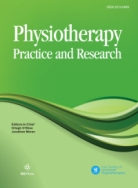Authors: Kaura, Surbhi | Walia, Shefali | Shrivastav, Achal K. | Noohu, Majumi M.
Article Type:
Research Article
Abstract:
BACKGROUND: Constraint induced movement therapy (CIMT) has been found to be an effective intervention for the treatment of upper extremity motor disabilities in people with stroke. There are many concerns around practicality and resource issues with CIMT, consequently there are various modifications in CIMT in terms of duration of constraint and type of constraints used. PURPOSE: The main objective of the study was to compare the effectiveness of voluntary constraint and hand mitt use in modified CIMT (mCIMT) in people with chronic stroke. METHODS: The study was a pre-post experimental design. A total of 20 participants
…were allocated randomly to two groups, with 10 participants in each group. The outcome measures used were the Wolf Motor Function Test (WMFT, time and functional ability scale, FAS) and a Motor Activity Log (MAL), amount of use (AOU) and quality of movement (QOM). The total duration of the intervention was 4 weeks with frequency of 5 days per week. The participants in group 1 were asked to do voluntary constraint and in group 2 a hand mitt was used to restrain the use of normal hand function during the training. The activities used in hand function training were the same for both the groups. RESULTS: There was no significant difference between groups after the intervention for WMFT time (t = 0.63, p = 0.5), WMFT FAS (t = –0.22, p = 0.8), MAL AOU (t = –0.25, p = 0.8) and MAL QOM (t = –0.28, p = 0.7). However there was a significant difference between pre-post scores in both groups for WMFT time group 1: t = 31.4, group 2: t = 23.9, p = 0.001 p = 0.001), WMFT FAS (t = –13.5, p = 0.01, group 2: t = –16.54, p = 0.001), MAL AOU (group 1: t = –10.7, p = 0.001, group 2: t = –9.9, p = 0.001) and MAL AOU QOM (group 1: t = –8.04, p = 0.001, group 2: t = –6.7, p = 0.001). CONCLUSION: Voluntary restraint can be an effective alternative constraint technique used in mCIMT to improve the hand function of the affected arm in people with stroke.
Show more
Keywords: Function, impairment, modified constraint induced movement therapy, stroke, physiotherapy
DOI: 10.3233/PPR-170108
Citation: Physiotherapy Practice and Research,
vol. 39, no. 1, pp. 45-51, 2018
Price: EUR 27.50





